Steam Deck price, specs, and everything else you need to know
All the Valve Steam Deck details you need in one place
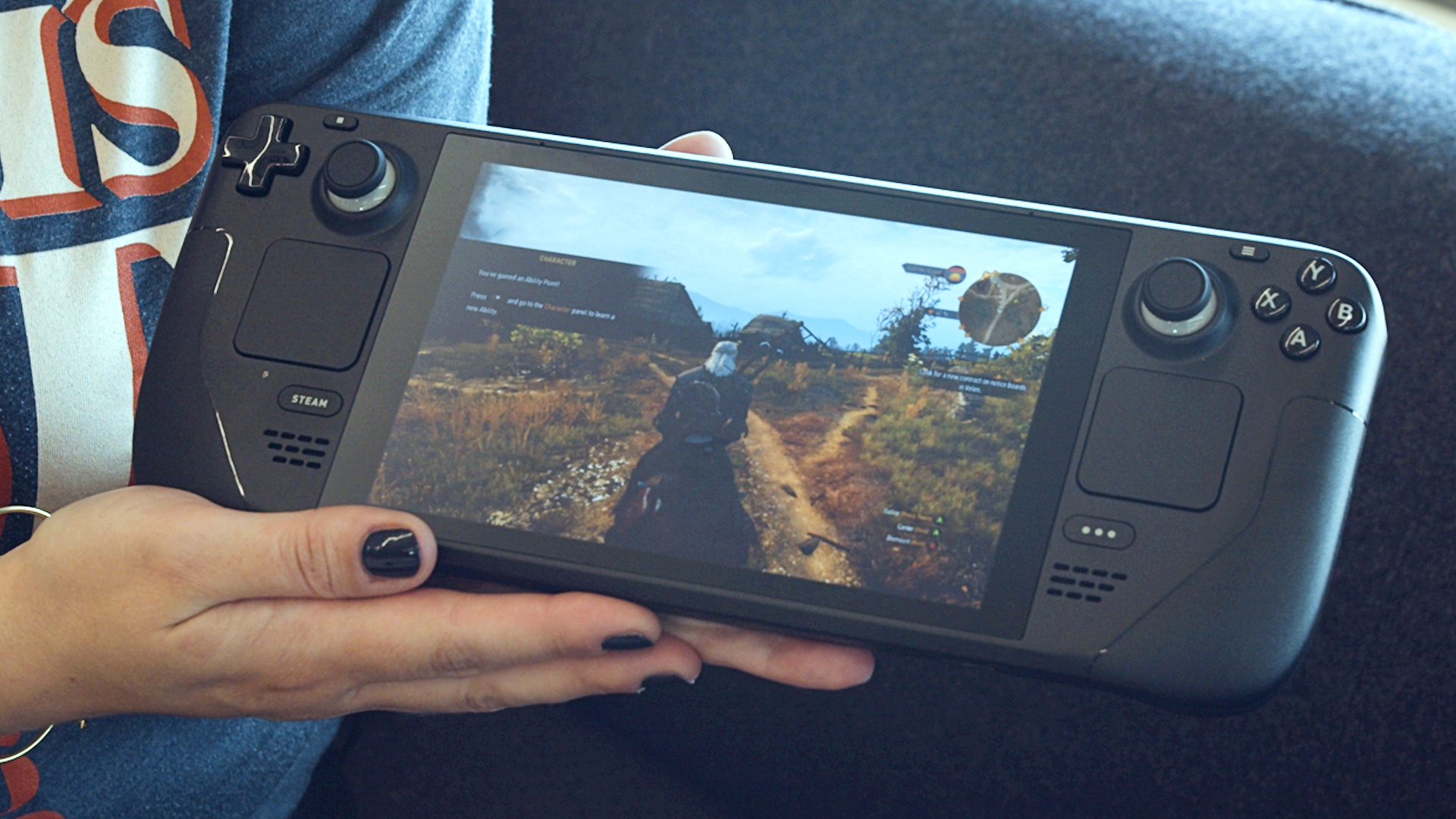
Steam Deck is Valve's way of getting around the biggest limitation of PC gaming: you can't bring your desktop setup on a bus.
The Steam Deck was delayed out of its initial December 2021 launch, but its updated release date is nearly here. Valve's portable PC gaming console is coming soon, which means we're just weeks away from taking our Steam libraries wherever we want. While we wait, here's everything you need to know about the Steam Deck.
The Steam Deck release date is set for February
Steam Deck shipments will start on February 28, and the first round of order reservation emails will be sent out on February 25. Valve says additional reservations will be sent out on a weekly basis. Here's how reservations work.
Hands-on with the Steam Deck
We spent several hours with the Steam Deck last year and found it to be a remarkably intuitive little device – or rather, a not-so-little device, seeing as how this thing is noticeably larger than the likes of the Nintendo Switch. But as our own Rachel Weber said in her Steam Deck hands-on preview, it does make it very easy to play Steam games virtually anywhere.
The Steam Deck price starts at $399 / £349
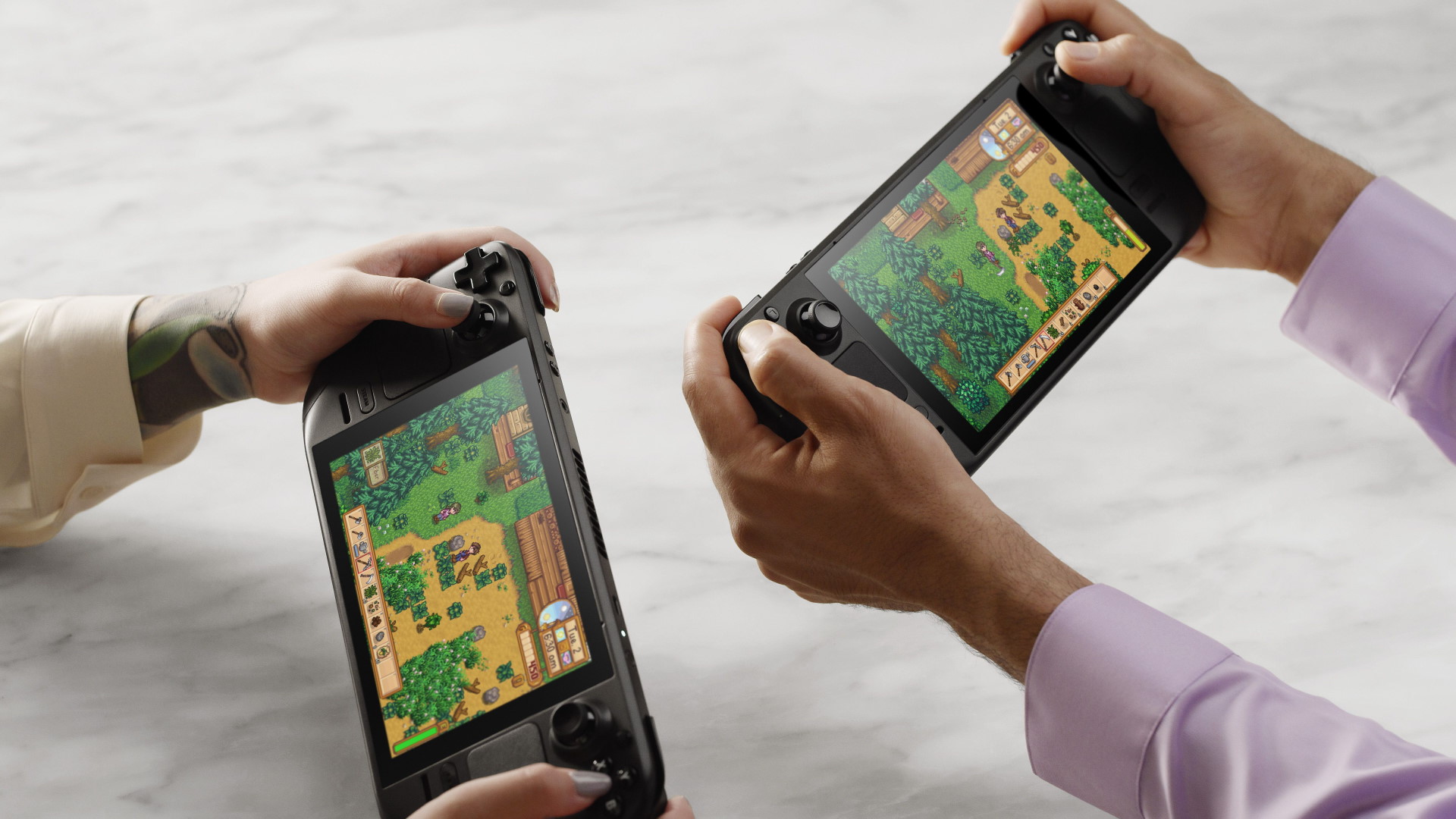
Valve is offering three distinct Steam Deck models, and while they have the same core components, the pricier versions offer greatly improved storage and come with some extra bells and whistles. Here's the full breakdown:
- $399 Steam Deck - the baseline model comes with 64GB of eMMC storage and a carrying case.
- $529 Steam Deck - an upgraded model with 256GB of faster NVMe SSD storage, the same carrying case, and an exclusive Steam profile bundle.
- $649 Steam Deck - a top-tier model with 512GB of "high-speed" NVMe SSD storage, special anti-glare glass, an exclusive virtual keyboard theme, a custom carrying case, and the aforementioned Steam profile bundle.
How to pre-order a Steam Deck
The initial Steam Deck pre-order period is over, but Valve is expecting additional units to become available after launch. You can sign up for more information over on the official store page.
The Steam Deck specs are pretty impressive
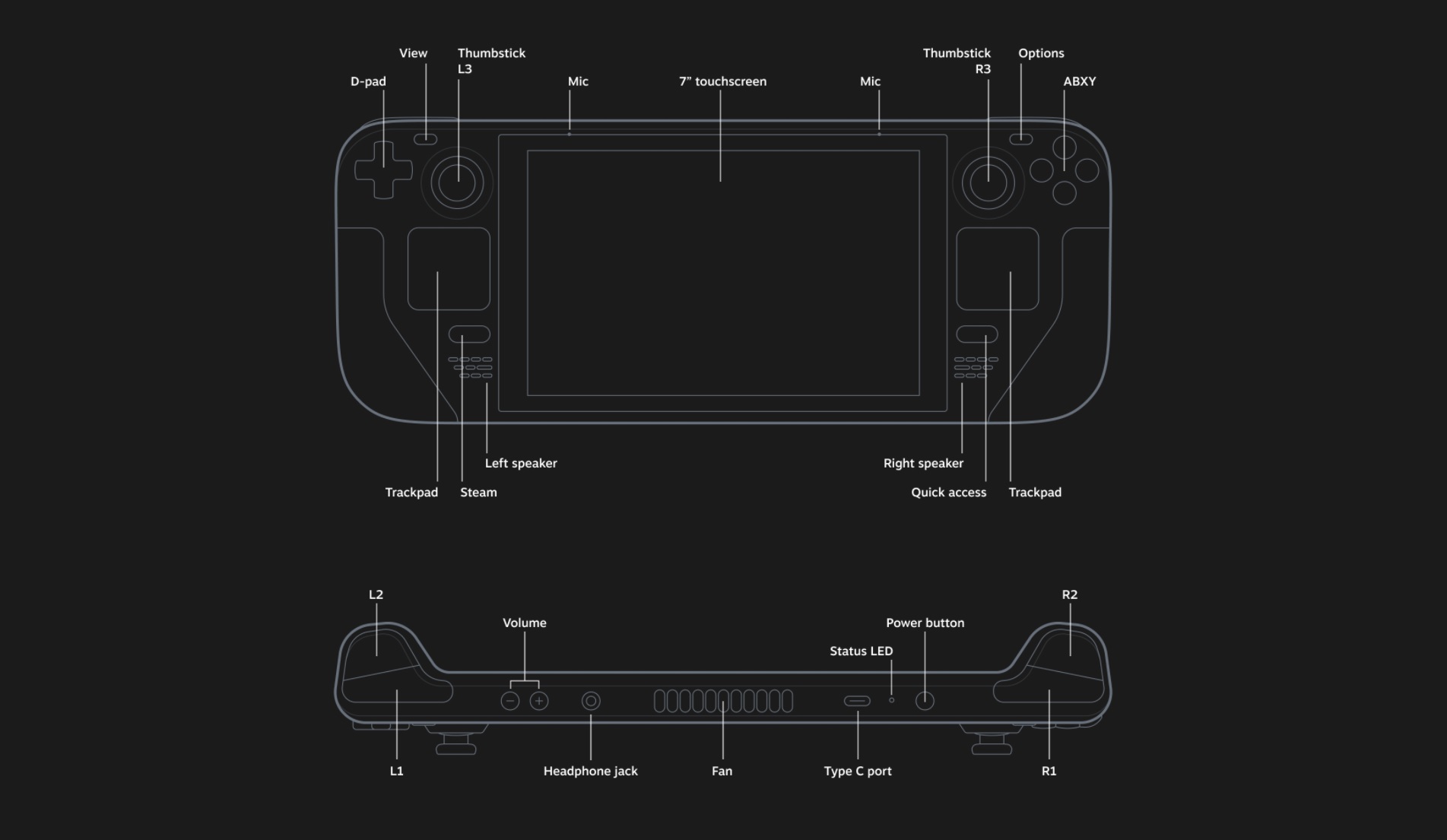
Valve has positioned the Steam Deck as a gaming laptop that you can hold like a Switch, and for how small it is, it's packing some serious power. Here are the full system specs, complete with unit dimensions and dock features:
Sign up to the GamesRadar+ Newsletter
Weekly digests, tales from the communities you love, and more
- CPU: Zen 2 4c/8t, 2.4-3.5GHz (up to 448 GFlops FP32)
- GPU: 8 RDNA 2 CUs, 1.0-1.6GHz (up to 1.6 TFlops FP32)
- RAM: 16 GB LPDDR5 on-board RAM (5500 MT/s quad 32-bit channels)
- Storage: 64GB eMMC base, 256GB and 512GB NVMe PCIe Gen 3 SSDs available
- Size: 11.7" long x 4.6" tall x 1.9" thick
- Weight: 1.47 pounds
- Screen: 7" 1280x800 (16:10) 60Hz LCD
- Audio: 3.5mm stereo jack
- Battery: 40WHr estimated 2 - 8 hours
- Video output (docked): up to 4K 120Hz / 8K 60Hz (game performance at these often resolutions remains to be seen)
- Ports (dock included): microSD card expansion, USB 2.0 and 3.1, HDMI, DisplayPort
- Connectivity: 2.4GHz / 5GHz Wifi, Bluetooth 5.0
- Gyro: 2.4GHz / 5GHz Wifi, Bluetooth 5.0
Check out how the Steam Deck specs compare to the Nintendo Switch, PS5, and Xbox Series X in our breakdown.
Upgrading the Steam Deck
All versions of the Steam Deck utilize a high-speed SSD of some kind. The entry-level model uses 64GB eMMC and the two pricier editions have an M.2 2230 NVMe SSD. Because of the ultra-compact form factor of the handheld, Valve has said that the Steam Deck SSD shouldn't be replaced due to the way that the memory has been connected to the unit; while it can technically be done, the company is heavily discouraging users from doing so - at least right now.
You can use the Steam Deck like a PC and dock it like a Switch
In case the specs didn't give it away, Valve will sell a dedicated dock for the Steam Deck that lets you hook it up to a monitor or TV like you would a Nintendo Switch. We don't know the price of the dock just yet, but the Steam Deck supports DisplayPort and HDMI output, so you'll be able to connect it to any screen in your house if you find yourself craving a bigger screen over portability.
It's also important to note that while the Steam Deck runs the Linux-based SteamOS, Valve says you can install other software on it and use it like you would a regular PC. So while it was built with gaming in mind, you could also use it for normal work or multi-tasking PC stuff, to say nothing of games on storefronts besides Steam.
Steam Cloud Sync lets you seamlessly jump from your PC to the handheld
Ahead of the Steam Deck's updated launch, Valve unveiled Steam Cloud Sync, which builds on Steam's existing cloud save functionality and allows Steam Deck users to instantly swap between their Deck and their PC without worrying about manually saving or exiting a game on their handheld. Any changes to your save file will be automatically downloaded when you load up Steam on either device, and Steam Cloud Sync will be free to use on all platforms.
Your entire Steam library is included with your Steam Deck, and it can play other games too
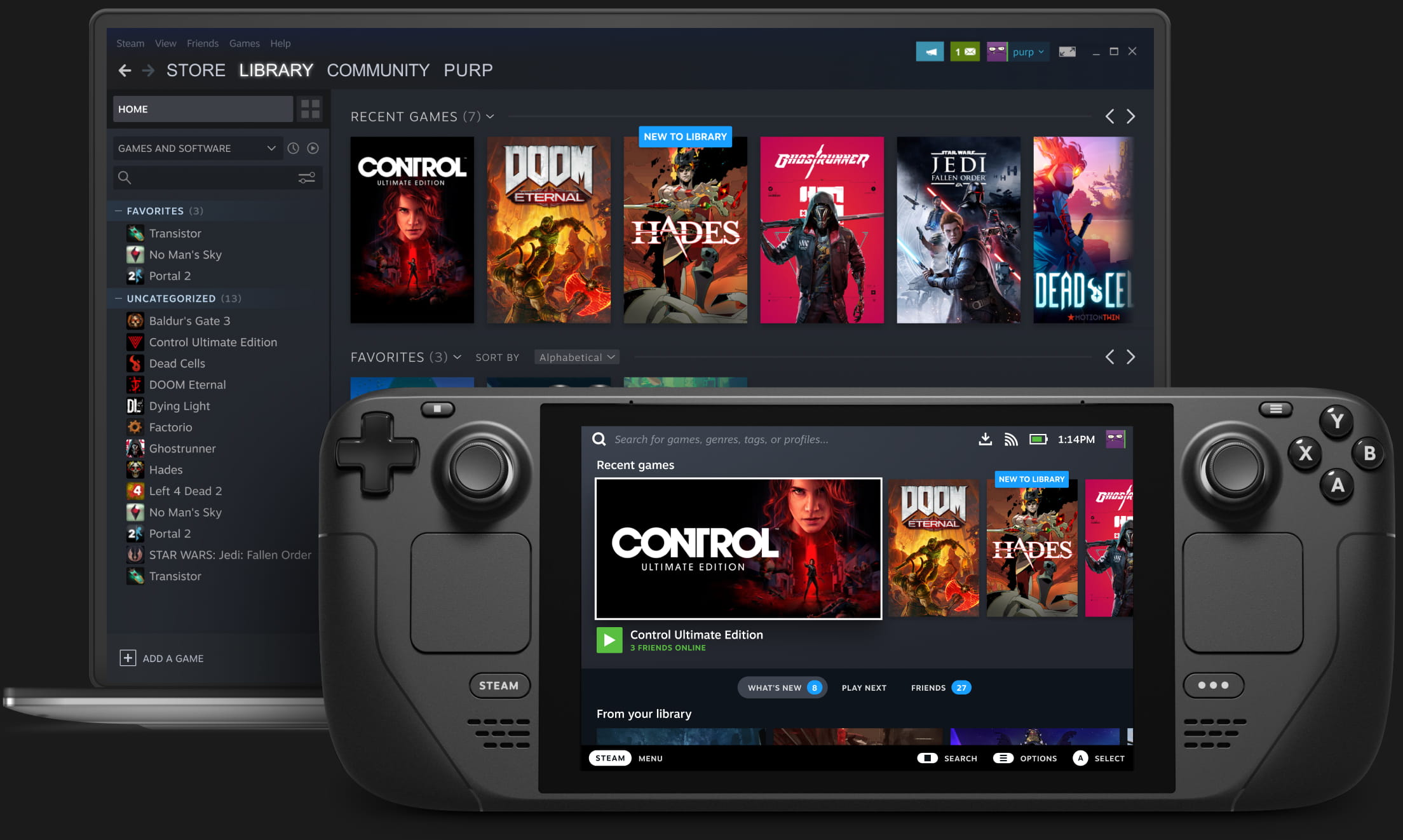
Once you sign in to your Steam Deck using your Steam account, you'll get access to every game in your Steam library. Between the handheld's thumbsticks, D-Pad, face and shoulder buttons, and its mouse-mimicking touchpads, it's equipped to play virtually anything, including games that decidedly weren't designed for handheld.
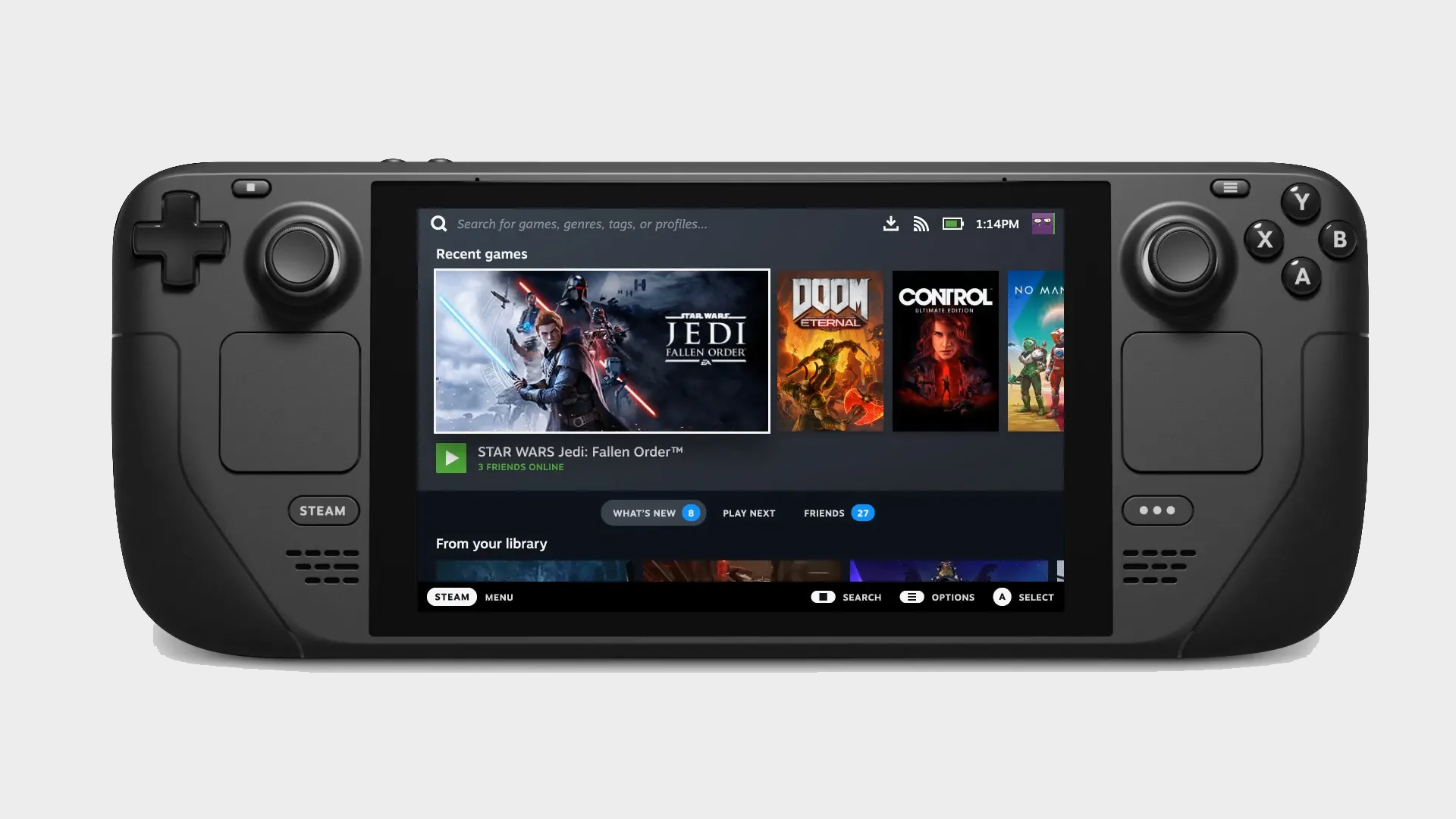
Games the Steam Deck might not play
Due to the Steam Deck running Steam OS, a heavily modified version of Linux that's been around for several years now, the handheld might not run Destiny 2, Apex Legends, and more. This is due to the anti-cheat software that's utilized by some of these titles, which has caused compatibility issues with booting the games themselves. Other games that might not run include Rainbow Six: Siege and Player Unknown's Battlegrounds.
Again, the system isn't out yet and we don't definitely know for sure that these online competitive titles are going to run into problems upon the handheld's release, but these are potential issues that could plague the unit. If you play games like these and want them on the go, the Steam Deck's difficulties with them may mean holding off for the time being.
Steam Deck: choosing the right version for you
We know it's tempting to want to save a few bucks, especially when it comes to PC gaming hardware, but we would generally recommend that you avoid the most basic model of the Steam Deck due to its low memory eMMC capacity and opt for one of the other modules with far higher NVMe SSD storage options.
This is because 64GB of total storage space, especially when Valve is discouraging users from modifying it themselves, it just isn't a lot to go off on when the average modern PC game ranges from 35-70 GB (or more) given the visual fidelity and complexity on display. What this means, is that you'll essentially be in a loop of deleting games constantly just to make space to play one (maybe two) games on the system.
In our opinion, it's a compromise that you shouldn't put yourself through. At the very least, spend the extra money and get a high speed 265GB version that will be able to keep up with new releases better and keep a back catalogue installed and ready to go without the fuss of near-constant inventory management - all but taking the fun pick up and play convenience away.
The future of SteamOS and Valve hardware
The Steam Deck will ship with and run on SteamOS - as we've touched upon above - which was originally launched by Valve in 2013 with the hopes of melding together the convenience of console gaming with the afforded benefits of PC power. Updates, up until recently, have been fairly few and far between for the operating system, with the last major revision happening in summer 2019. That's likely to change soon as more games are optimised for use on the Steam Deck, thankfully.
Now, SteamOS was not released on its own, it was originally supposed to be the lifeblood of the ill-fated Steam Machines, which saw their first major push in late 2013 and were all but discontinued two years later. The aptly named Steam Controller would have gone hand-in-hand with these game console-like PCs for the living room, but, despite reviews generally being favorable to the device, it just didn't catch on as anticipated.
Keep in mind, however, the essence of the Steam Controller with its dual trackpads and layout lives in through the consoles either side of the Steam Deck itself. The former inclusion was touted for how it made previously keyboard and mouse only games viable on pad, now, the same is set to be seen in the handheld form factor.

Austin has been a game journalist for 12 years, having freelanced for the likes of PC Gamer, Eurogamer, IGN, Sports Illustrated, and more while finishing his journalism degree. He's been with GamesRadar+ since 2019. They've yet to realize his position is a cover for his career-spanning Destiny column, and he's kept the ruse going with a lot of news and the occasional feature, all while playing as many roguelikes as possible.
- Aleksha McLoughlinHardware Editor
- Rachel WeberContributor


